
Chandra Taal, meaning the Lake of the Moon, is a stunning high-altitude lake in the Lahaul and Spiti district of Himachal Pradesh, India. It is located at an elevation of about 4,300 meters (14,100 feet) and is the source of the Chandra River. The lake derives its name from its crescent shape and is surrounded by majestic mountains and vast meadows. It is a popular destination for trekkers, campers, photographers, and nature lovers who want to experience the beauty and tranquility of this remote and pristine lake.
How to Reach Chandra Taal
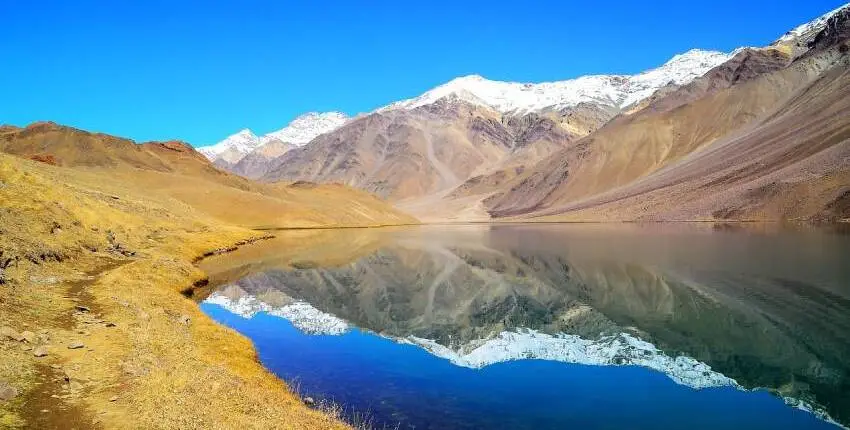
Chandra Taal is accessible by road from Batal and by road as well as on foot from Kunzum Pass from late May to early October. The road to Chandra Taal branches off from NH-505 about 2.9 kilometers (1.8 miles) from Batal and 8 km (5 miles) from KunzumPass1. This 12 km (7.5 miles) motor road runs as far as a parking lot 1 kilometer (0.62 miles) from the lake. One has to travel on foot for the final 1 kilometre2. It takes approximately two hours from Kunzum Pass to Chandra Taal.
Weather at Chandra Taal
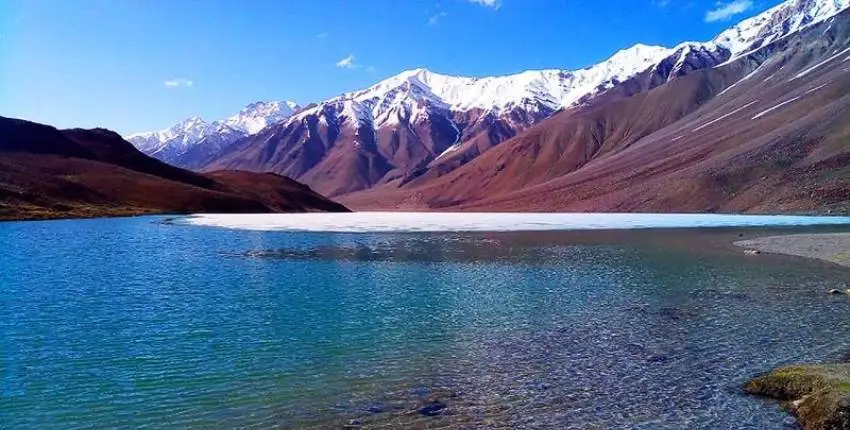
The weather at Chandra Taal is unpredictable and can change drastically within a short span of time. The temperature can range from sub-zero to above 20 degrees Celsius depending on the season and time of the day. The lake remains frozen from December to April and starts to melt in May. The best time to visit Chandra Taal is from June to September when the lake is in its full glory and the meadows are blooming with wildflowers. However, one should also be prepared for rain, snow, hail, and strong winds at any time of the year.
Points to visit at Chandra Taal
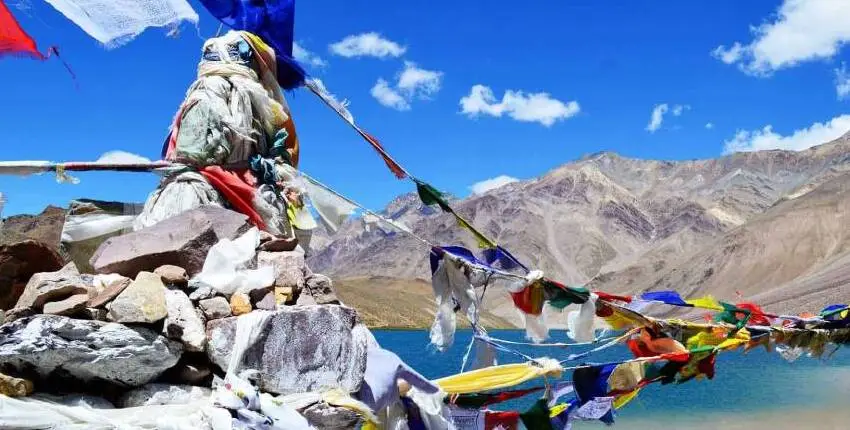
The main attraction at Chandra Taal is the lake itself, which offers a mesmerizing view of its turquoise waters reflecting the snow-capped peaks and the blue sky. The lake has a circumference of about 2.5 km (1.6 miles) and can be circumambulated in an hour or so. There is also a small island in the middle of the lake that can be reached by wading through shallow water. Another point of interest at Chandra Taal is the Samudra Tapu plateau, which overlooks the lake and the Chandra River valley. It is a vast expanse of barren land that offers a panoramic view of the surrounding mountains and glaciers. It is also a good spot for stargazing at night as there is no light pollution in this remote area.
Best Time to Visit Chandra Taal
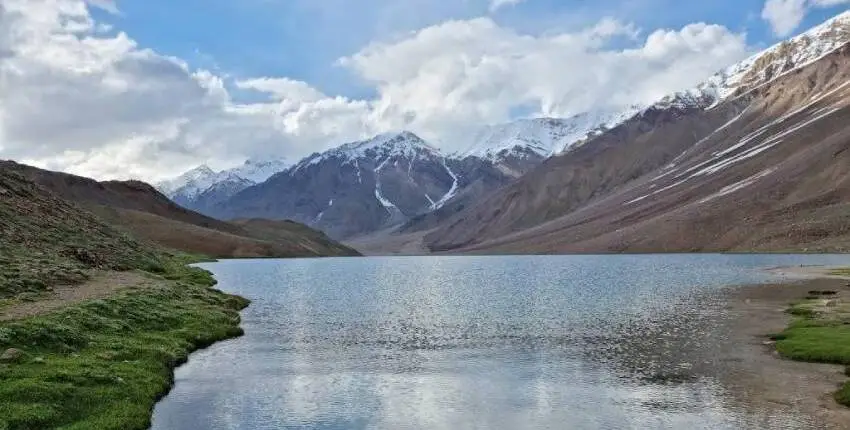
The best time to visit Chandra Taal depends on one’s preference and the purpose of visiting. For those who want to see the lake in its frozen state and enjoy the snow-covered landscape, the winter months from December to April are ideal. However, one should also be aware of the challenges and risks involved in traveling to such a high-altitude place in extreme cold conditions. For those who want to see the lake in its liquid state and enjoy the greenery and flowers around it, the summer months from June to September are ideal. For those who want to avoid the peak tourist season and enjoy some solitude and peace, the spring months from May to June and autumn months from October to November are ideal.
Things to Carry for Chandra Taal
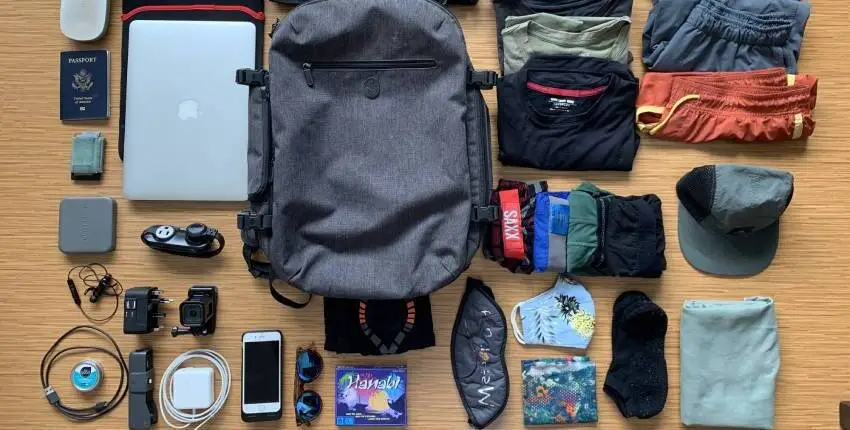
- Chandratal Lake is a high-altitude lake in Himachal Pradesh, India, that has a crescent shape and a turquoise color.
- It is located at an elevation of about 4,300 meters (14,100 feet) and is the source of the Chandra River.
- It is accessible by road from Batal and Kunzum Pass from late May to early October, and by foot for the final 1 kilometre (0.62 miles).
- It is prone to altitude sickness, so one should acclimatize properly, drink plenty of water, and descend if symptoms persist or worsen.
- It is a protected wetland under the Ramsar Convention and is home to various species of flora and fauna.
- It is a sacred place for the local people and is associated with various myths and legends.
- It offers a mesmerizing view of its waters reflecting the snow-capped peaks and the blue sky, and a panoramic view of the mountains and glaciers from the Samudra Tapu plateau.
- It is a popular destination for trekkers, campers, photographers, and nature lovers who want to experience the beauty and tranquility of this remote and pristine lake.
- It is also a gateway to many other places of interest in Lahaul and Spiti region such as Kunzum Pass, Kaza, Rohtang Pass, Manali, etc.
- It requires some essential items to carry such as warm clothes, raincoats, shoes, sunglasses, hats, gloves, scarf, sleeping bag, tent, flashlight, camera, power bank, map, compass, whistle, etc.
Do’s and Don’ts at Chandra Taal
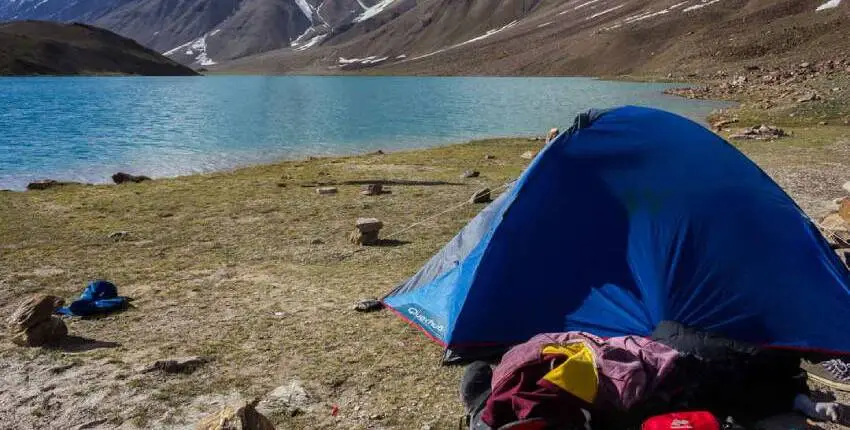
To ensure a safe and enjoyable trip to Chandra Taal, one should follow some do’s and don’ts that will help them respect the environment, culture, and people of this place. Some of the do’s and don’ts at Chandra Taal are:
Do’s
- Do plan your trip well in advance and book your accommodation, transportation, and permits accordingly.
- Do respect the natural environment and avoid littering, polluting, disturbing, or harming wildlife.
- Do follow the rules and regulations of the forest department and the local authorities regarding camping, bonfires, fishing, etc.
- Do respect the cultural and religious sentiments of the locals and seek their permission and guidance before visiting any nearby temples, monasteries, or villages.
- Enjoy the scenic beauty, tranquility, and adventure of this place, and capture the memories and moments with your camera or phone.
Don’ts
- Don’t travel to Chandra Taal without proper acclimatization, hydration, and medication as it may cause altitude sickness or other health issues.
- Don’t venture into the lake or the island without proper guidance or safety measures as it may be dangerous or disrespectful.
- Don’t light a fire or cook near the lake or the meadows as it may damage the ecosystem or attract unwanted animals.
- Don’t play loud music or make noise near the lake or the campsites as it may disturb the peace and harmony of this place.
- Don’t leave behind any trace of your visit such as plastic, wrappers, bottles, cans, etc. as it may pollute the environment or harm the wildlife.
Leave a Reply